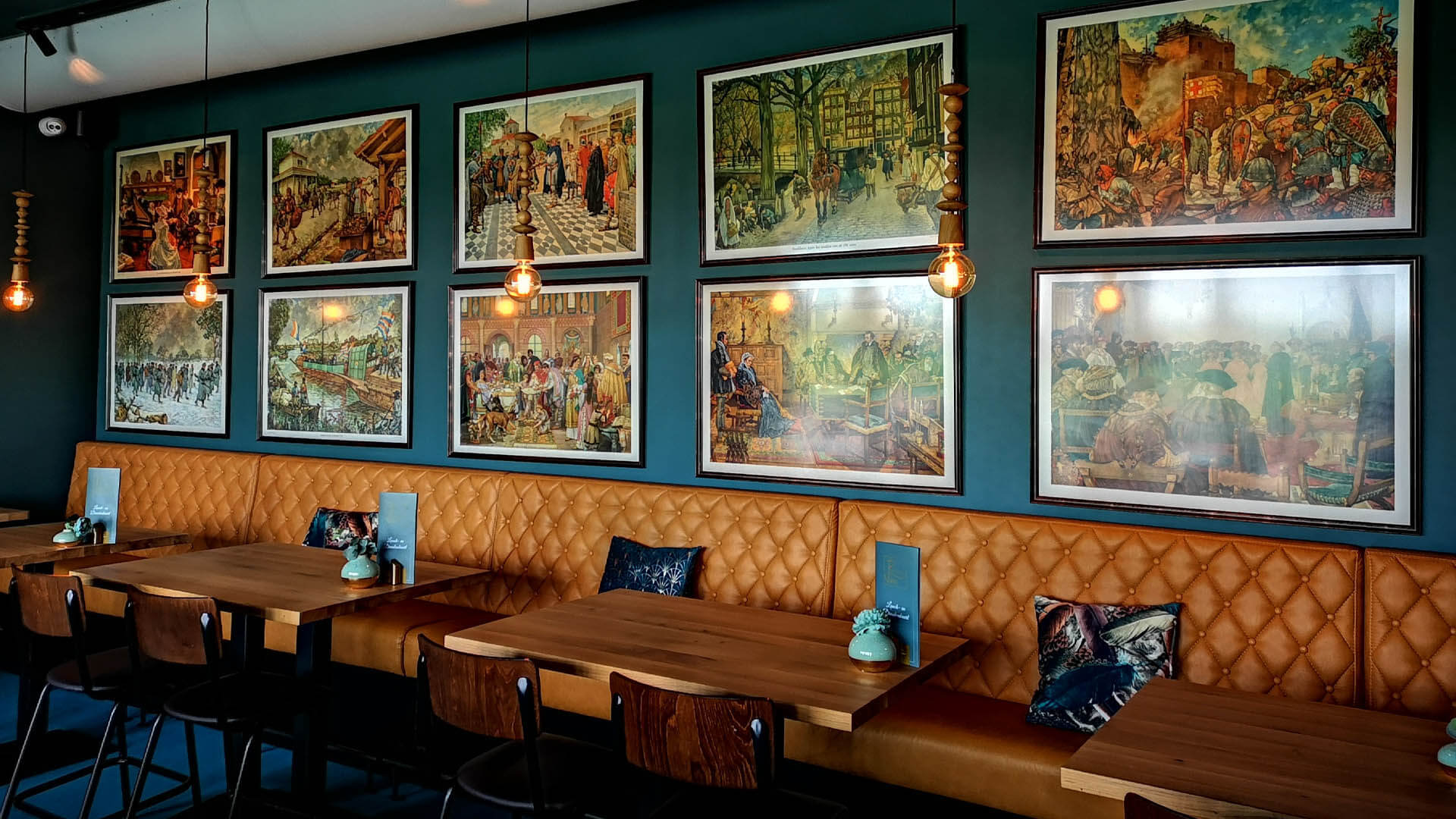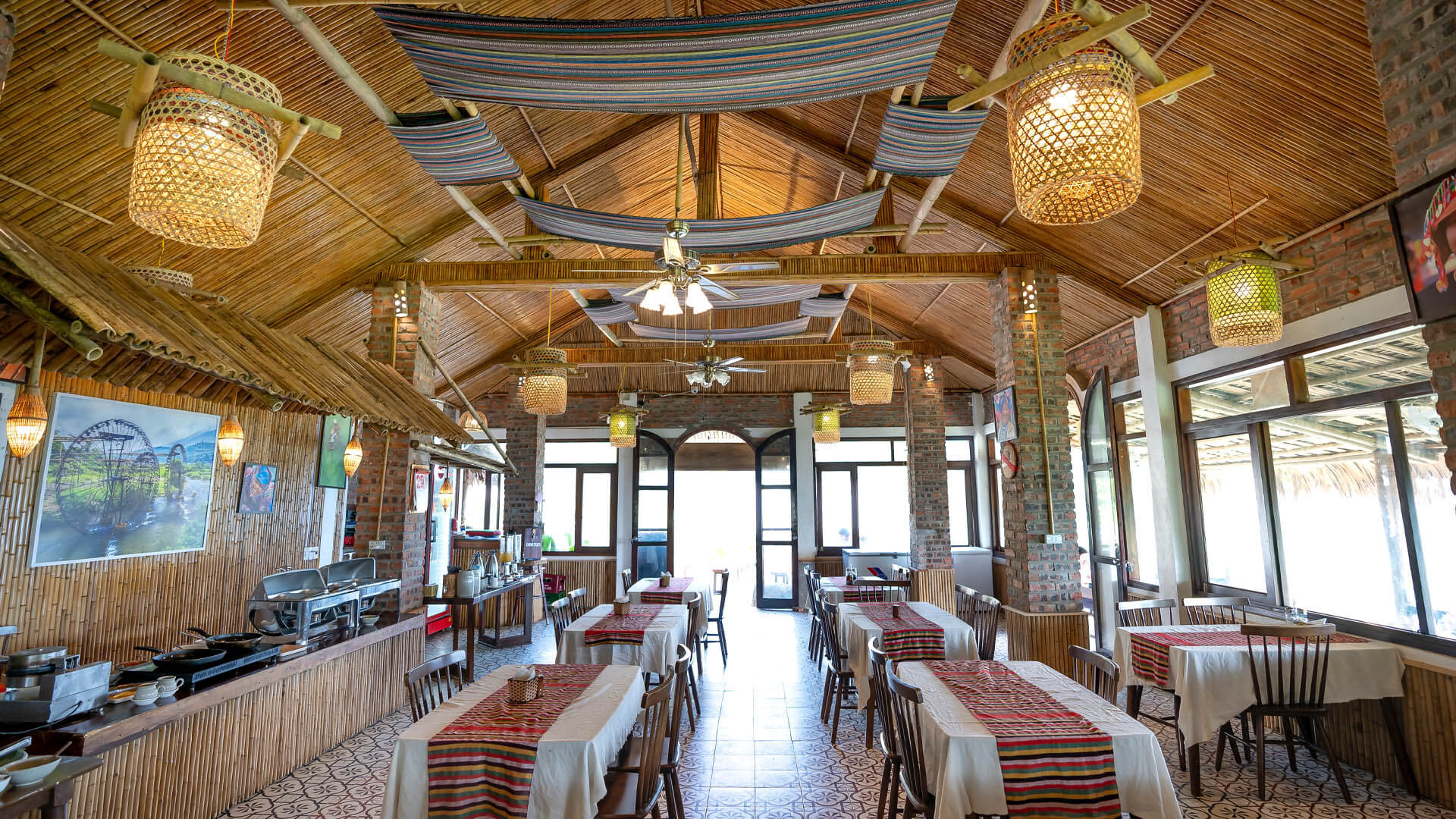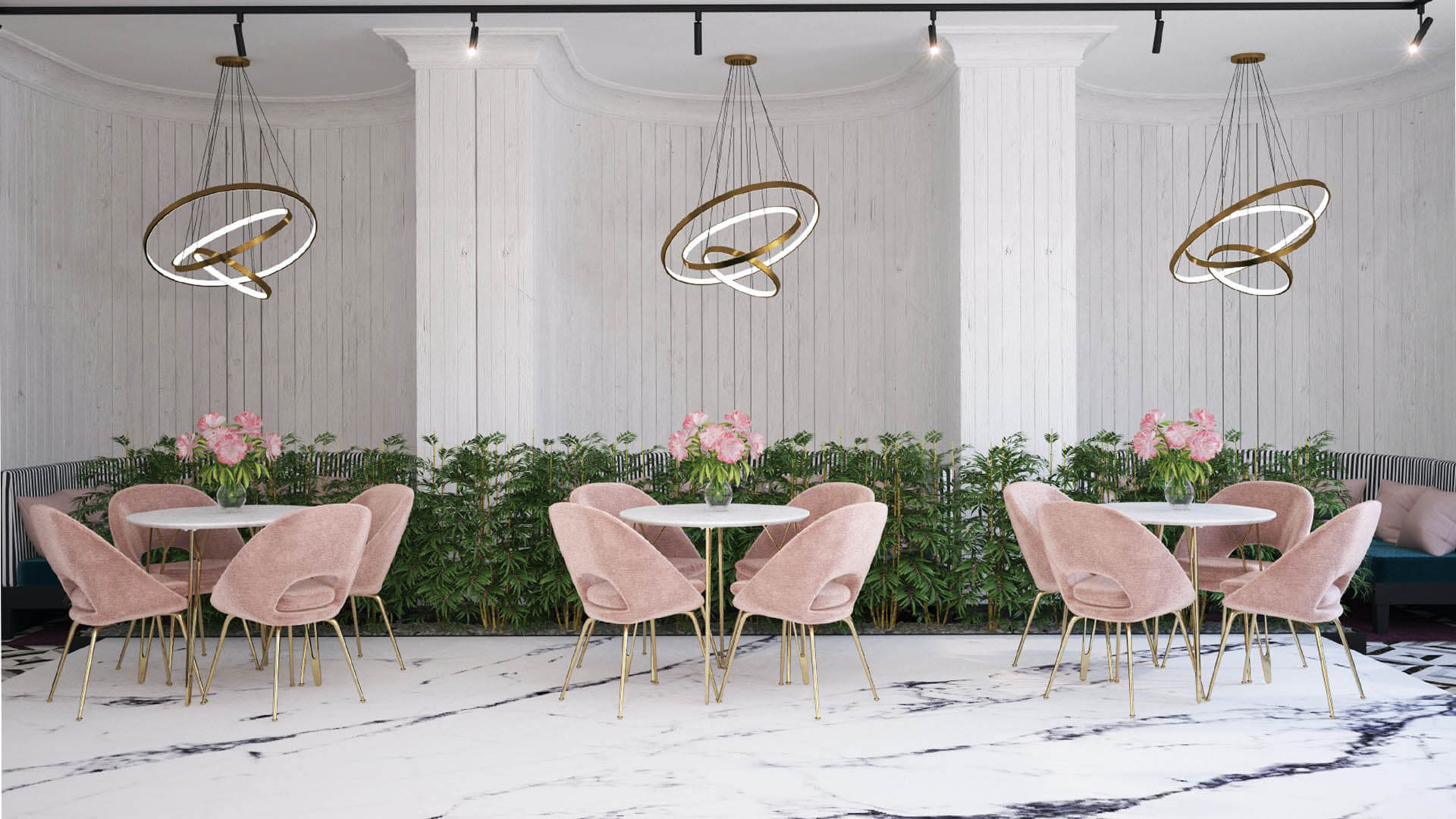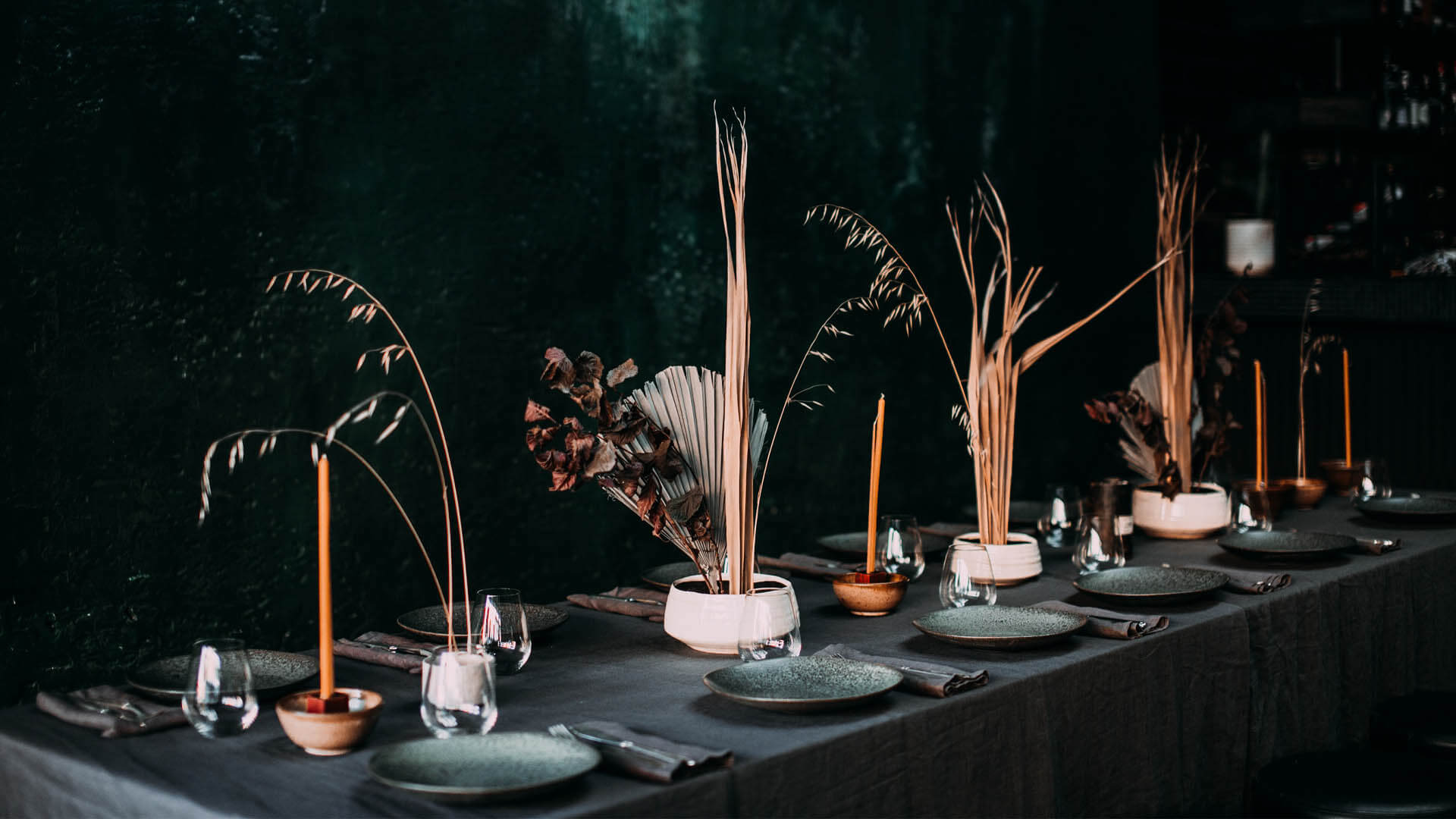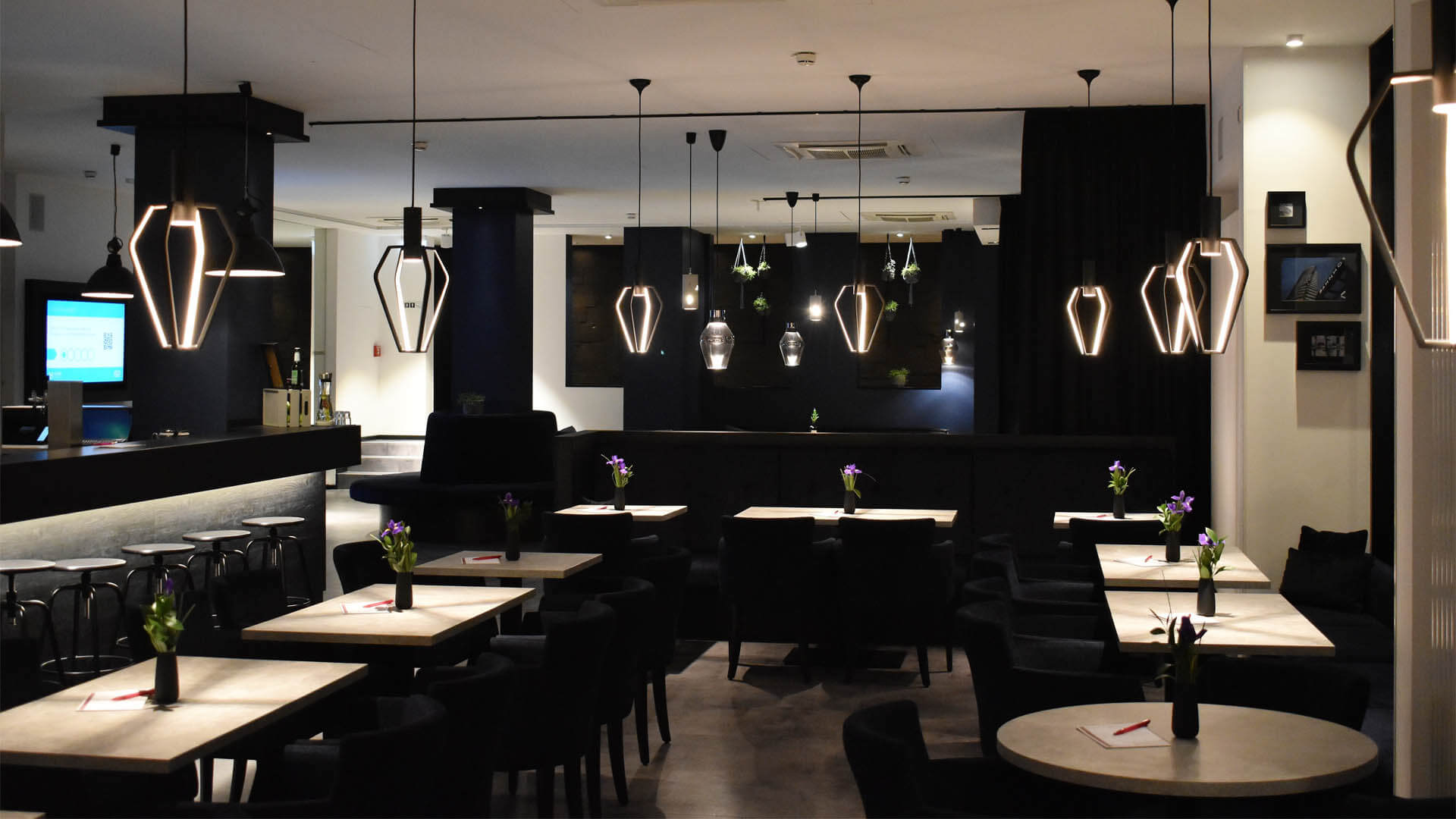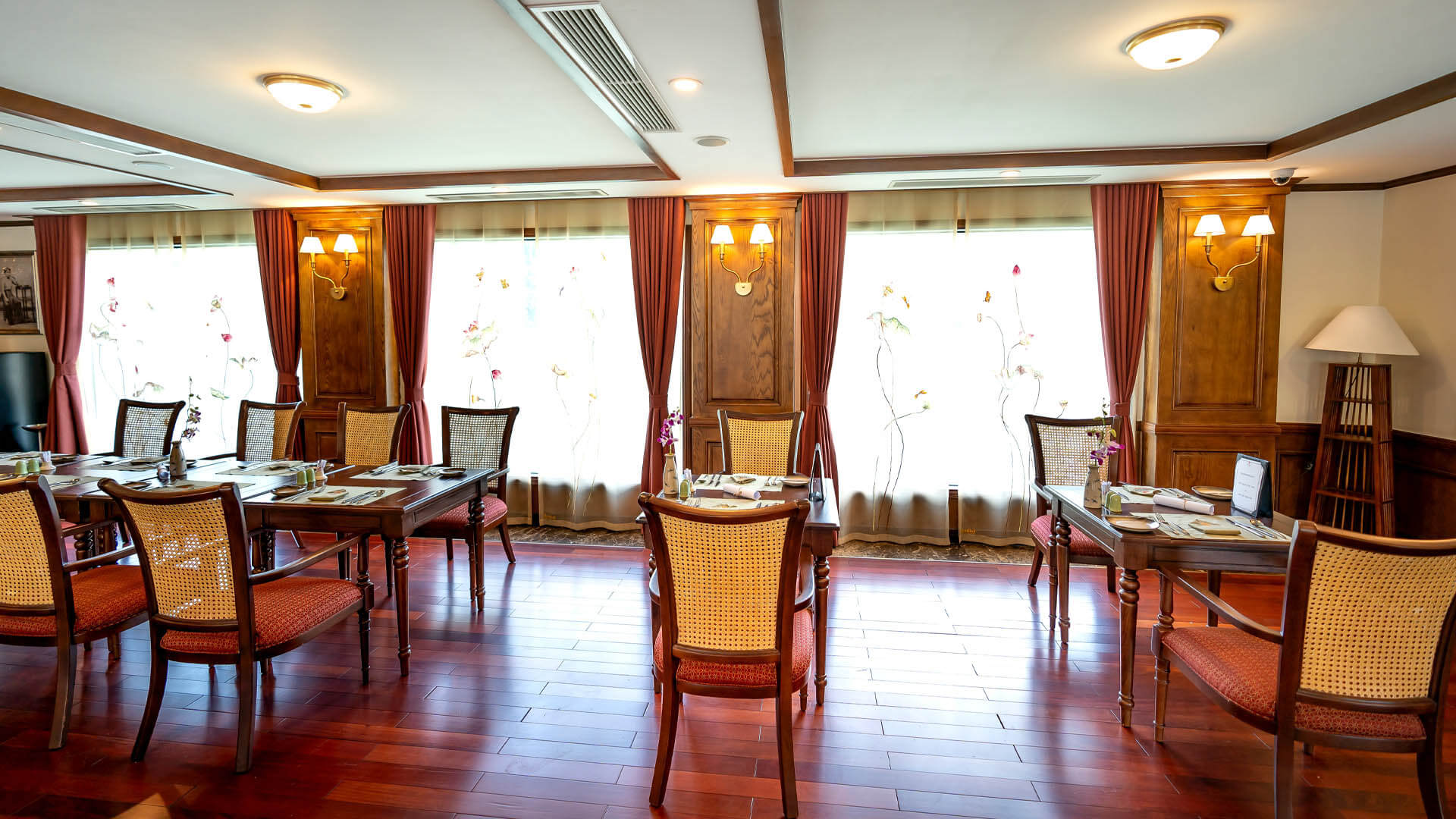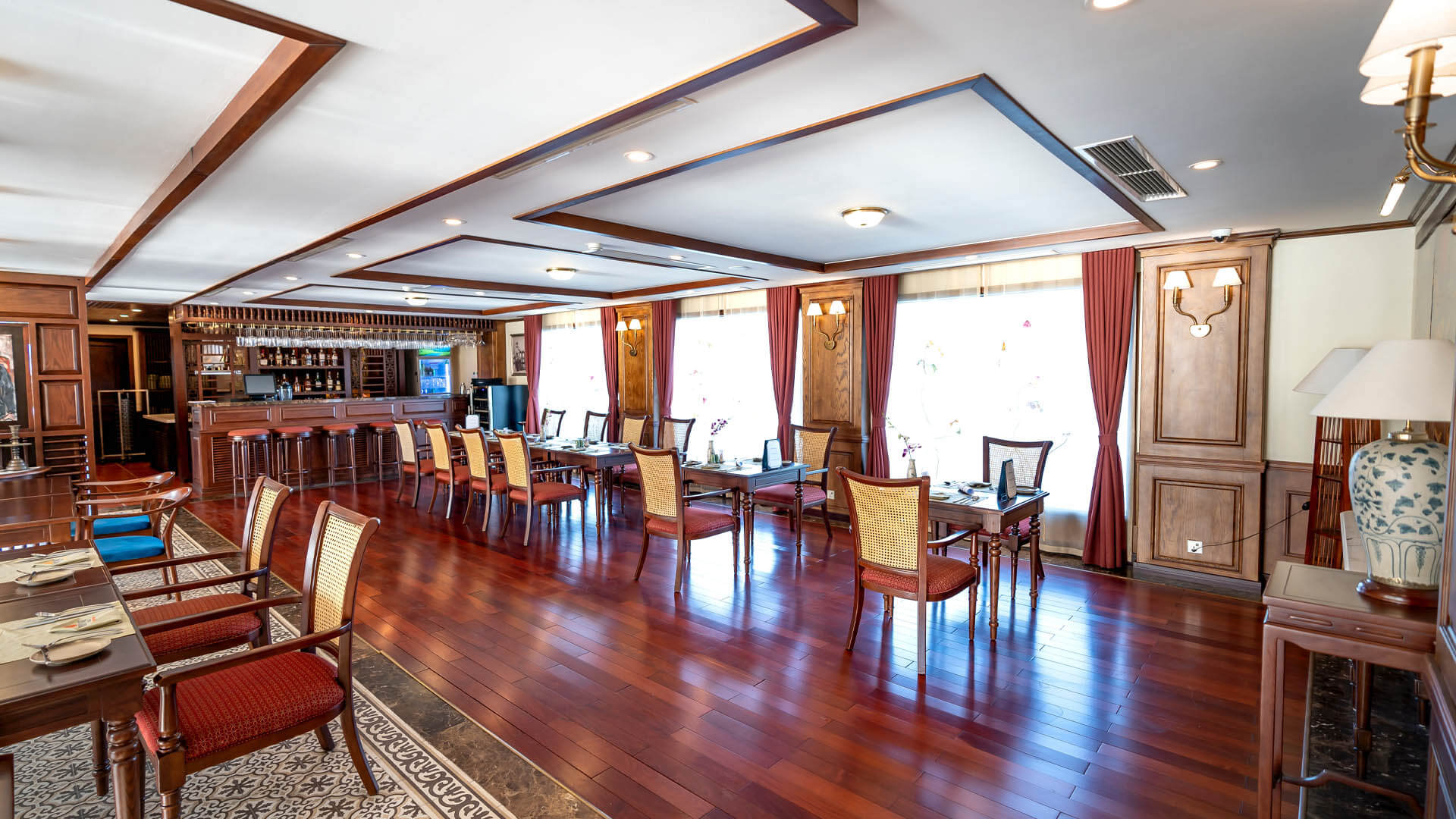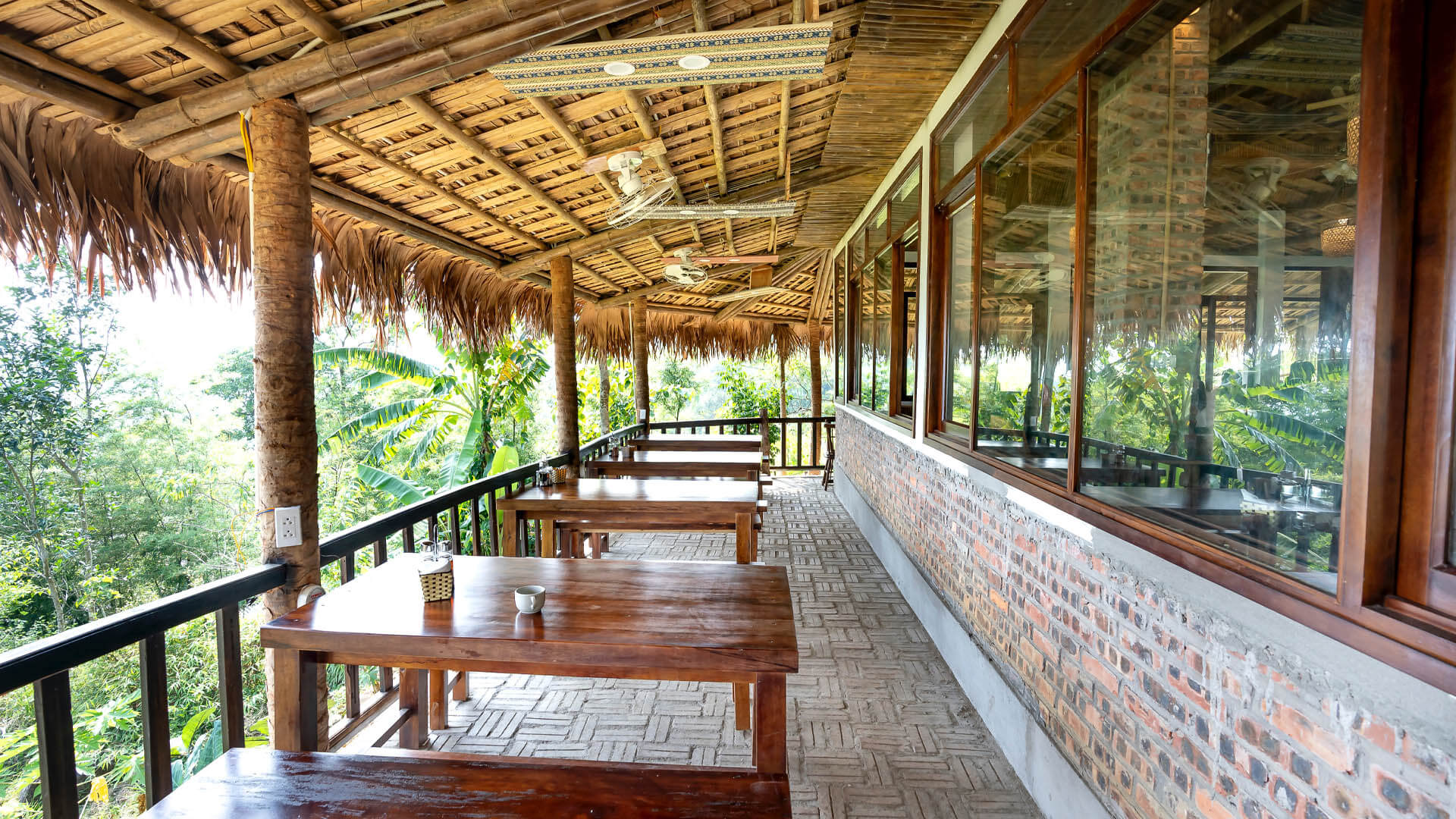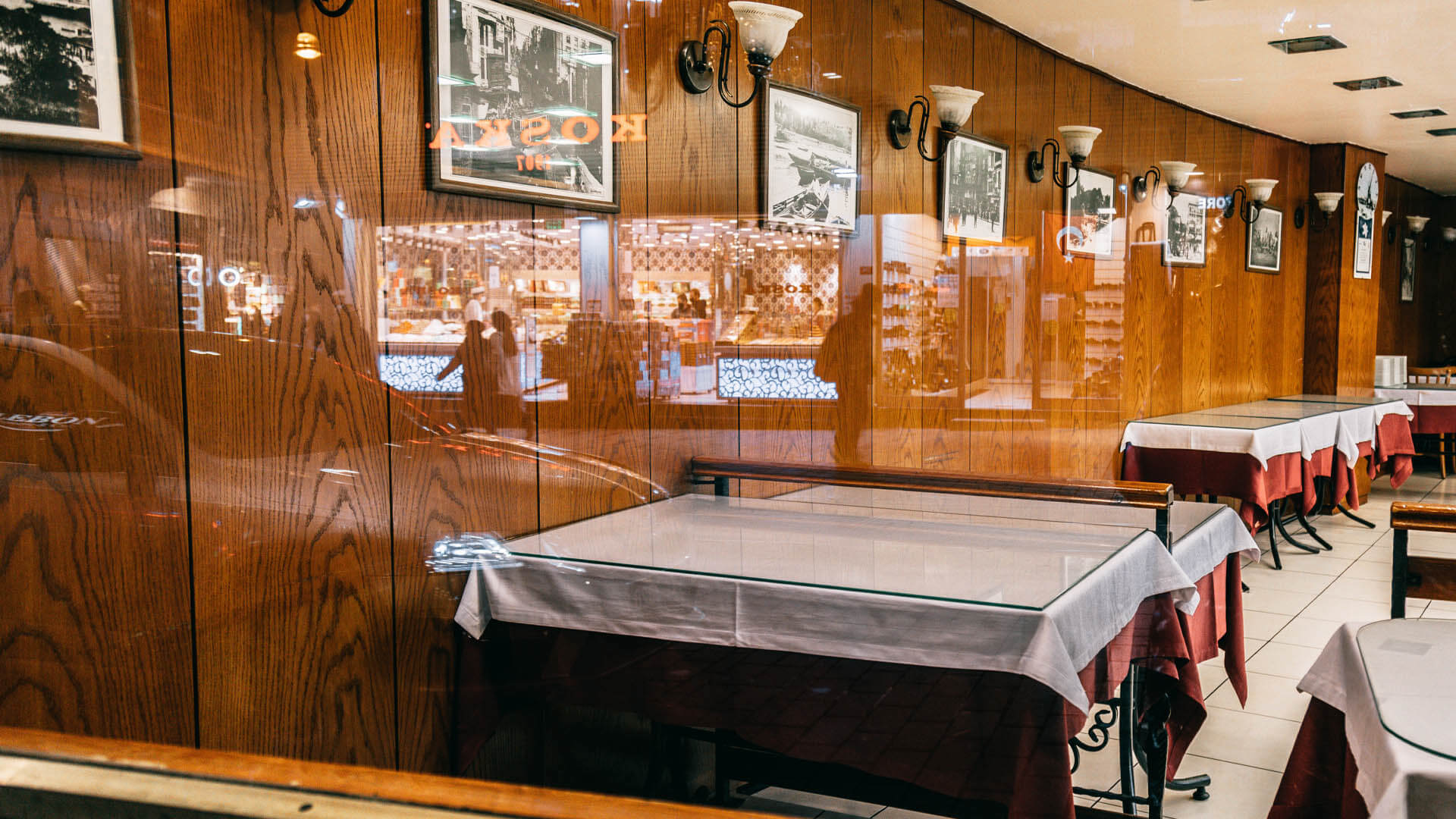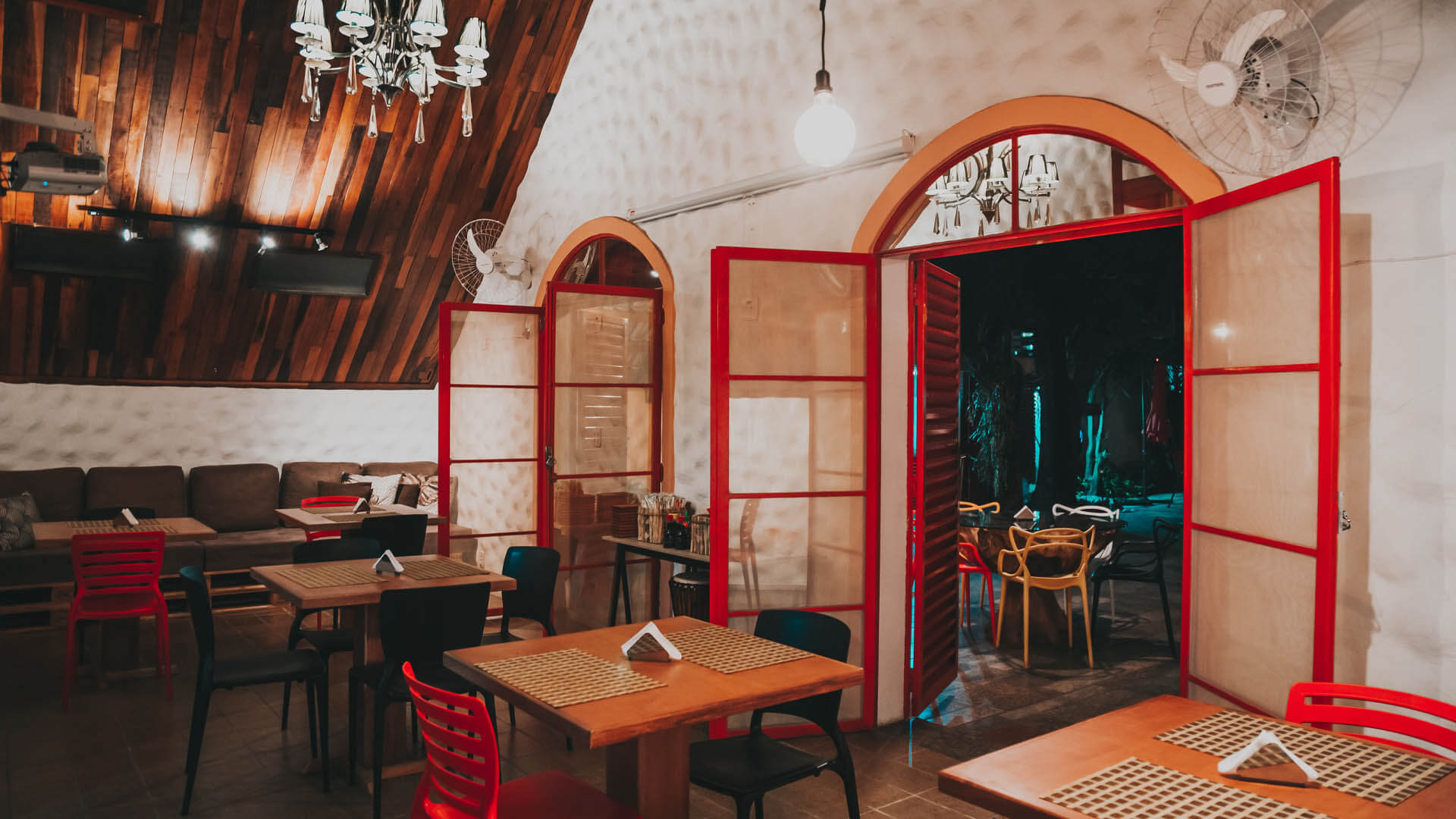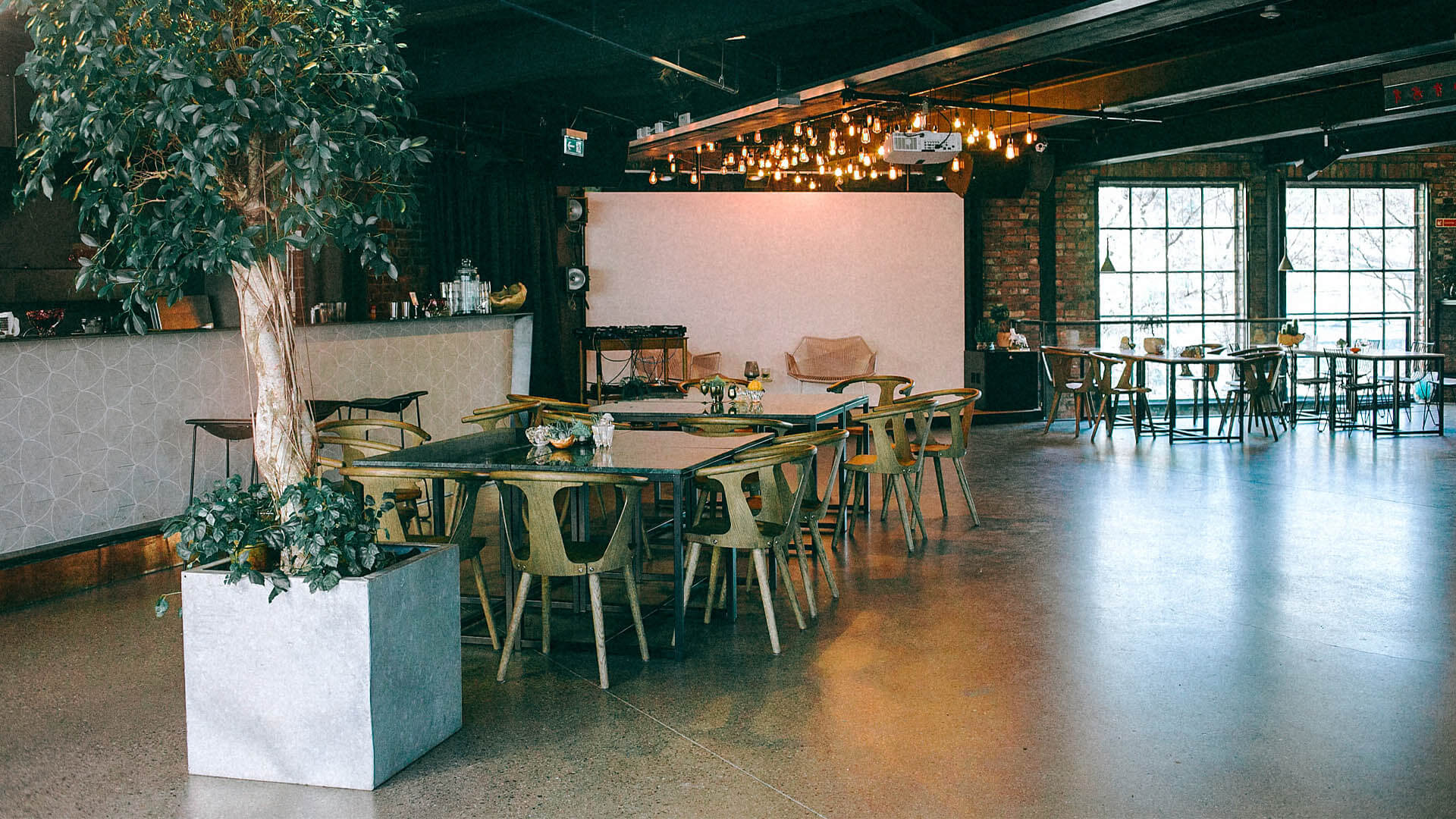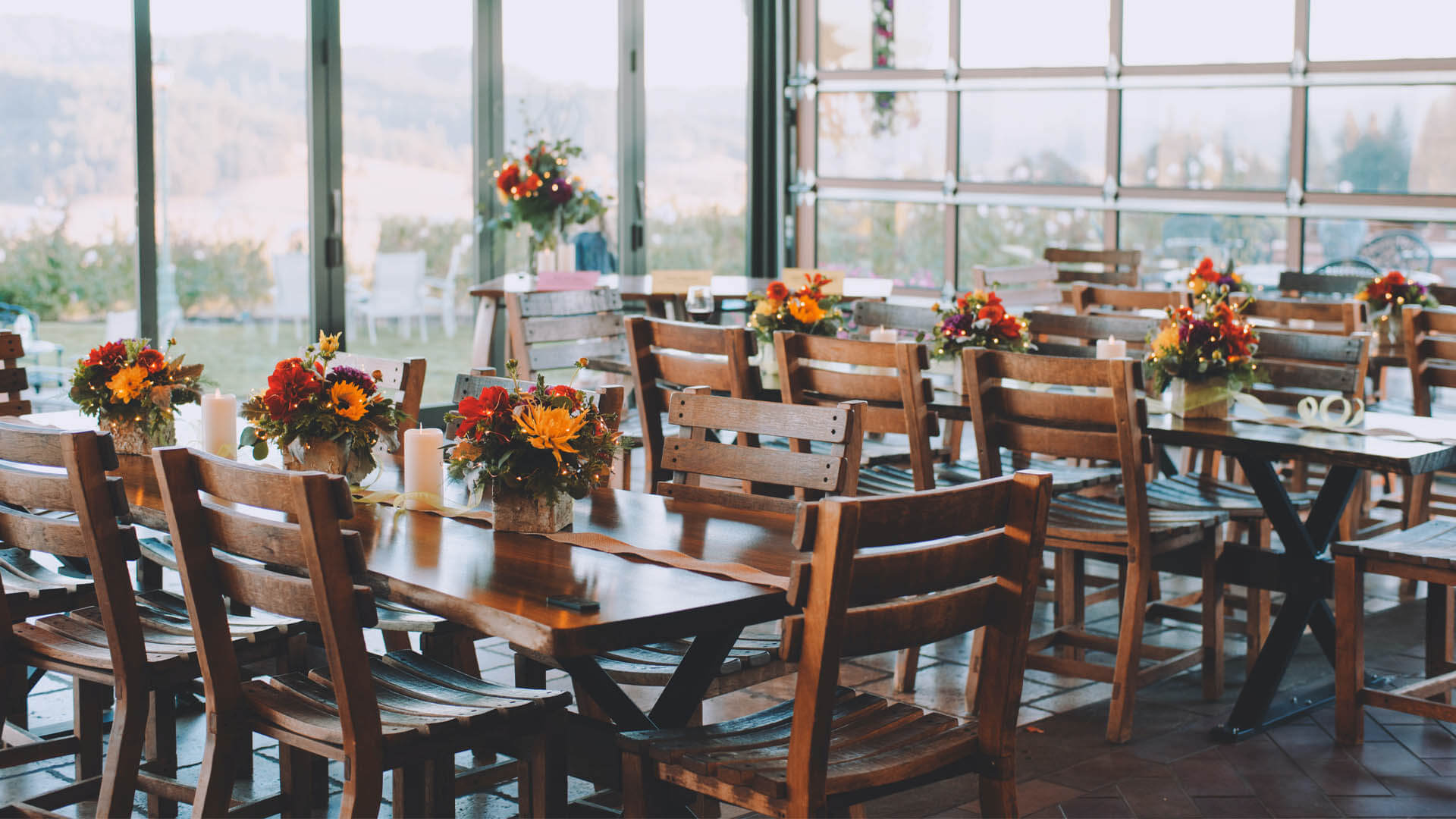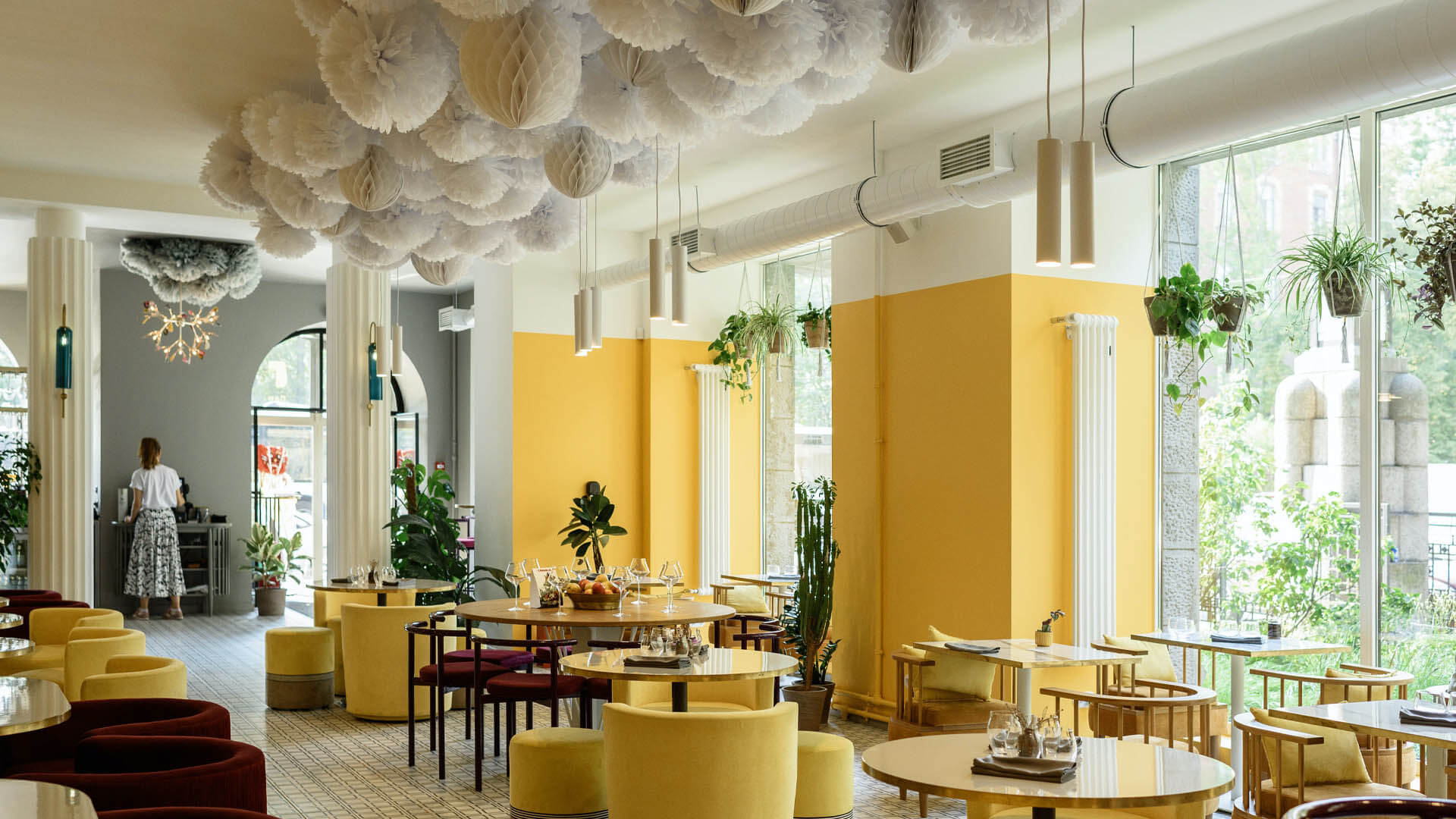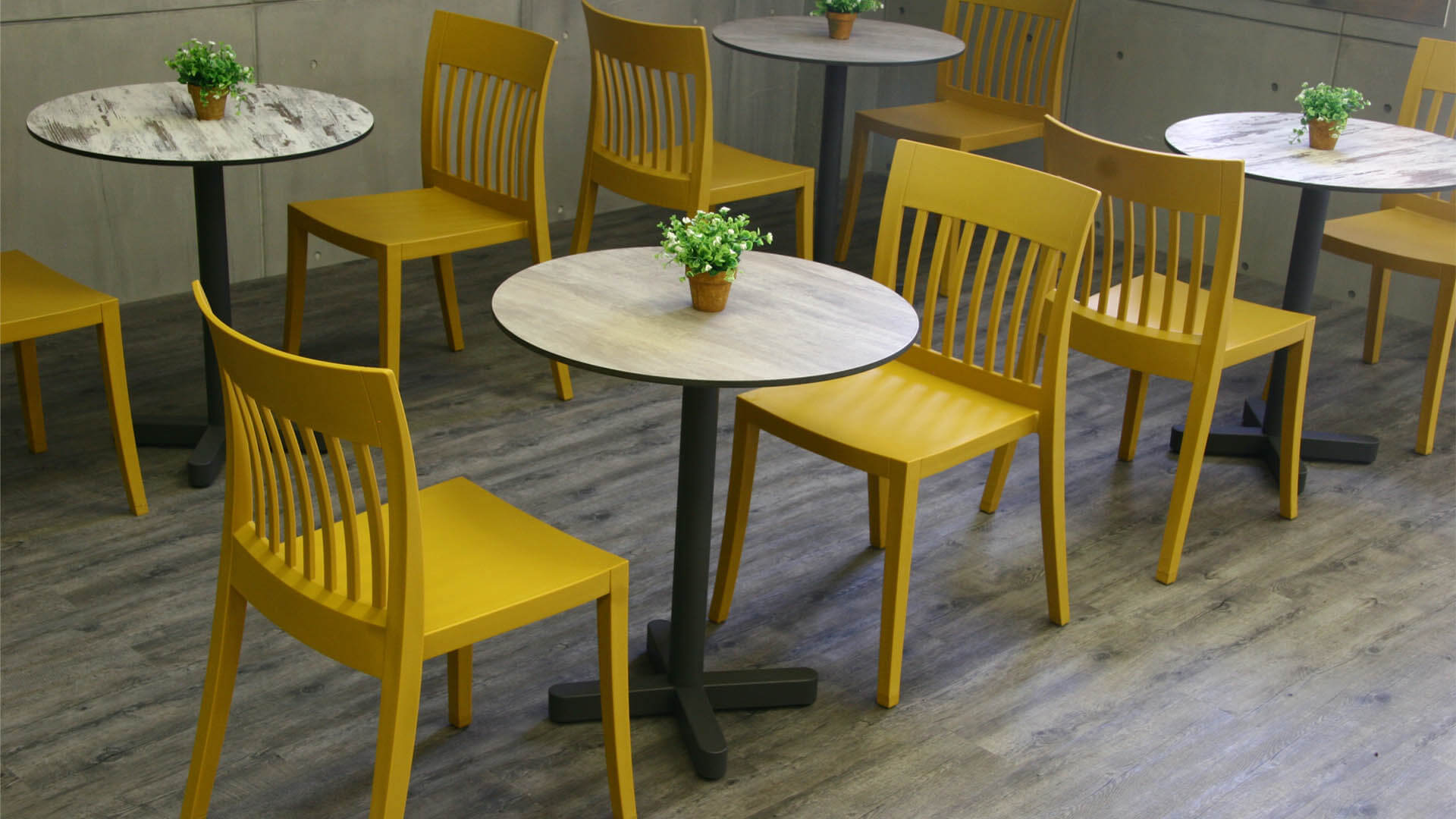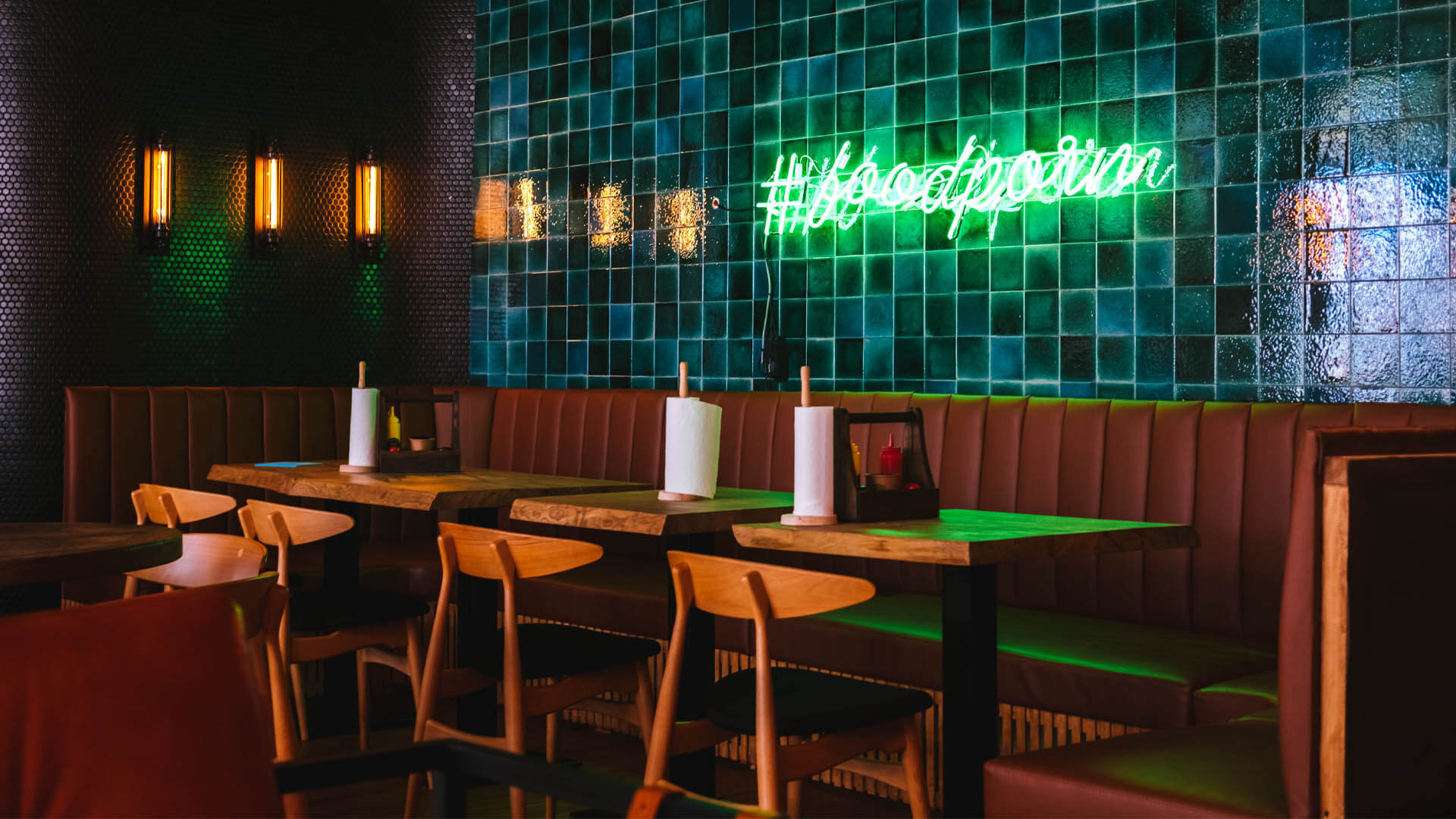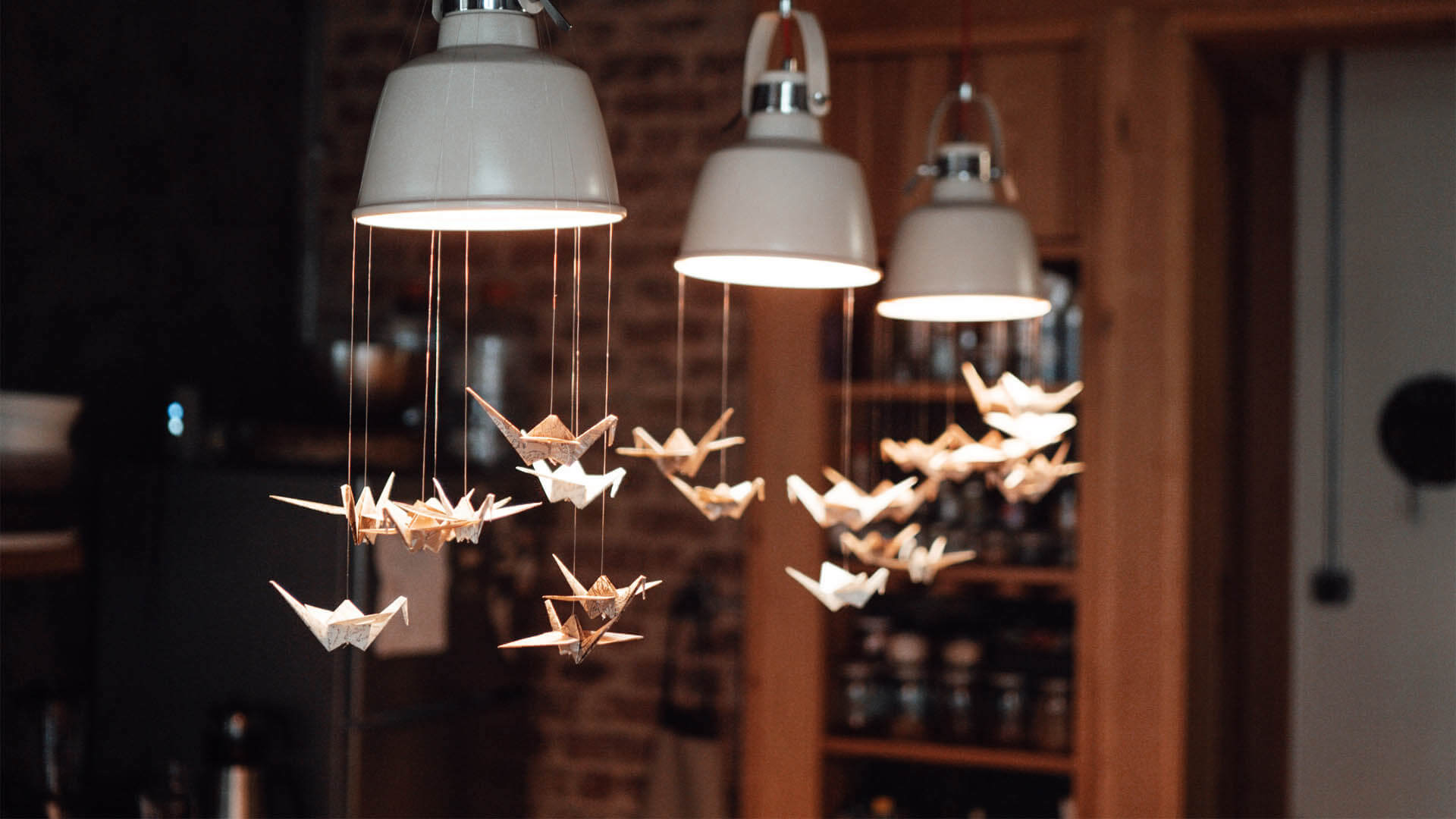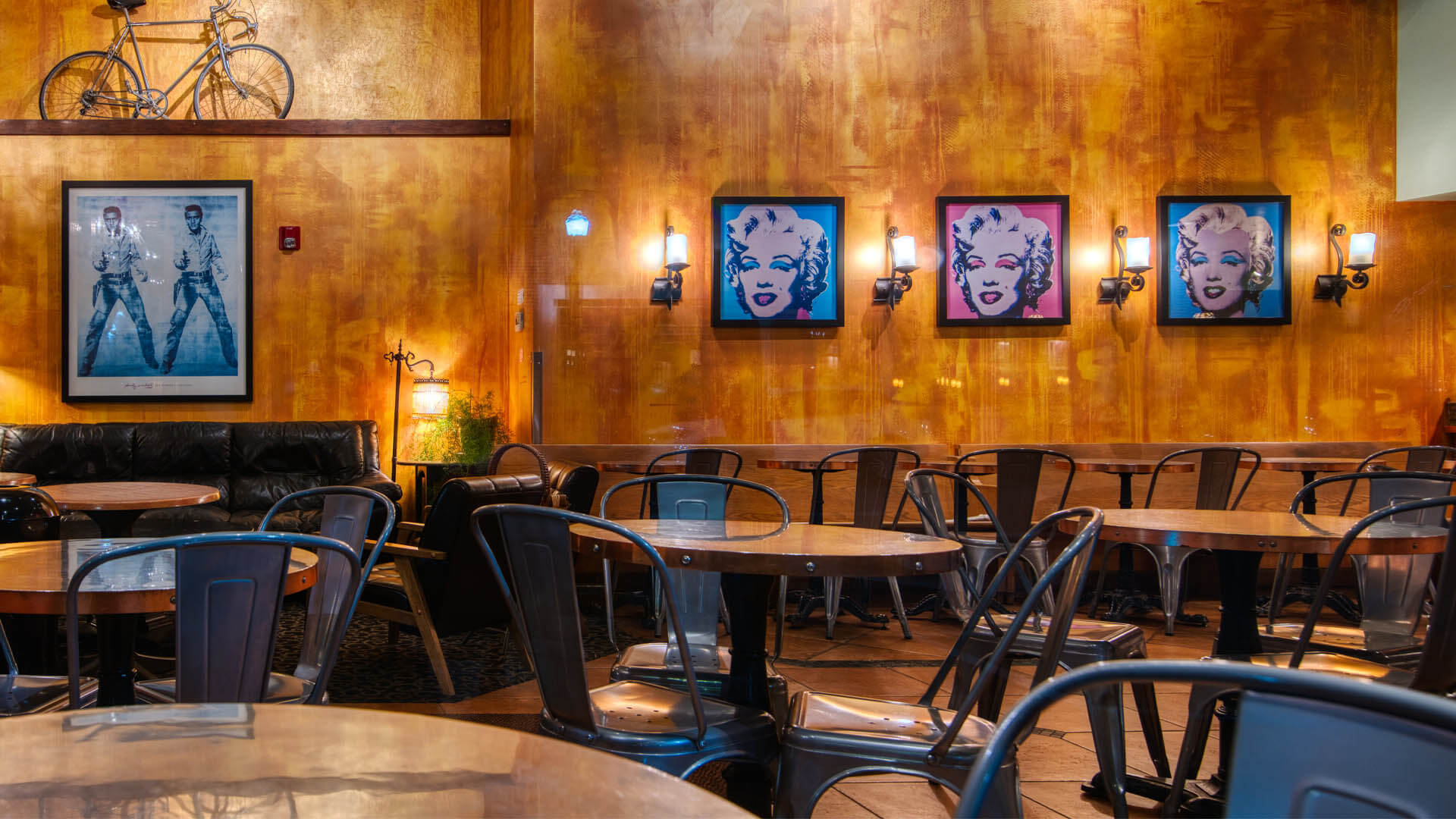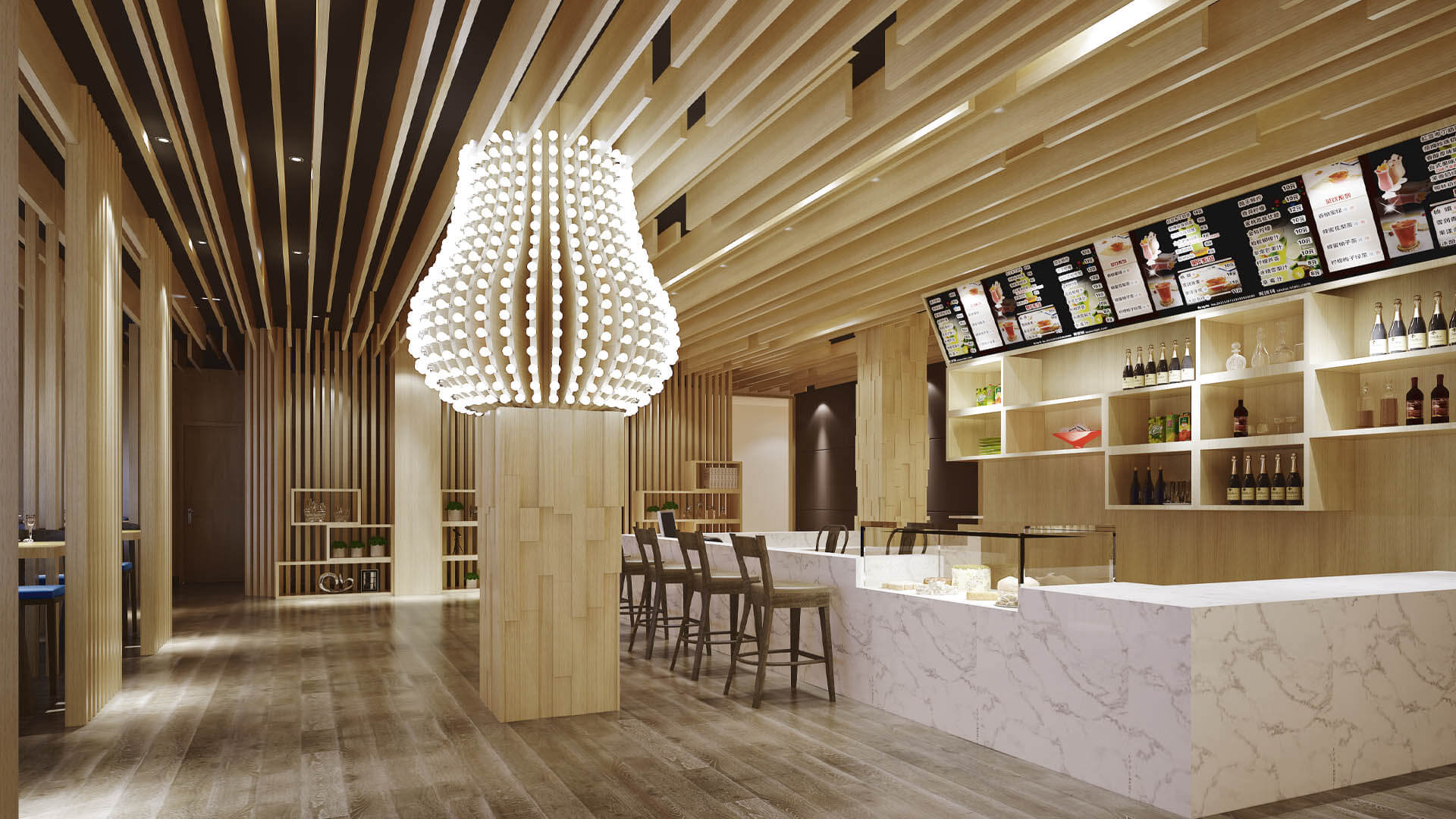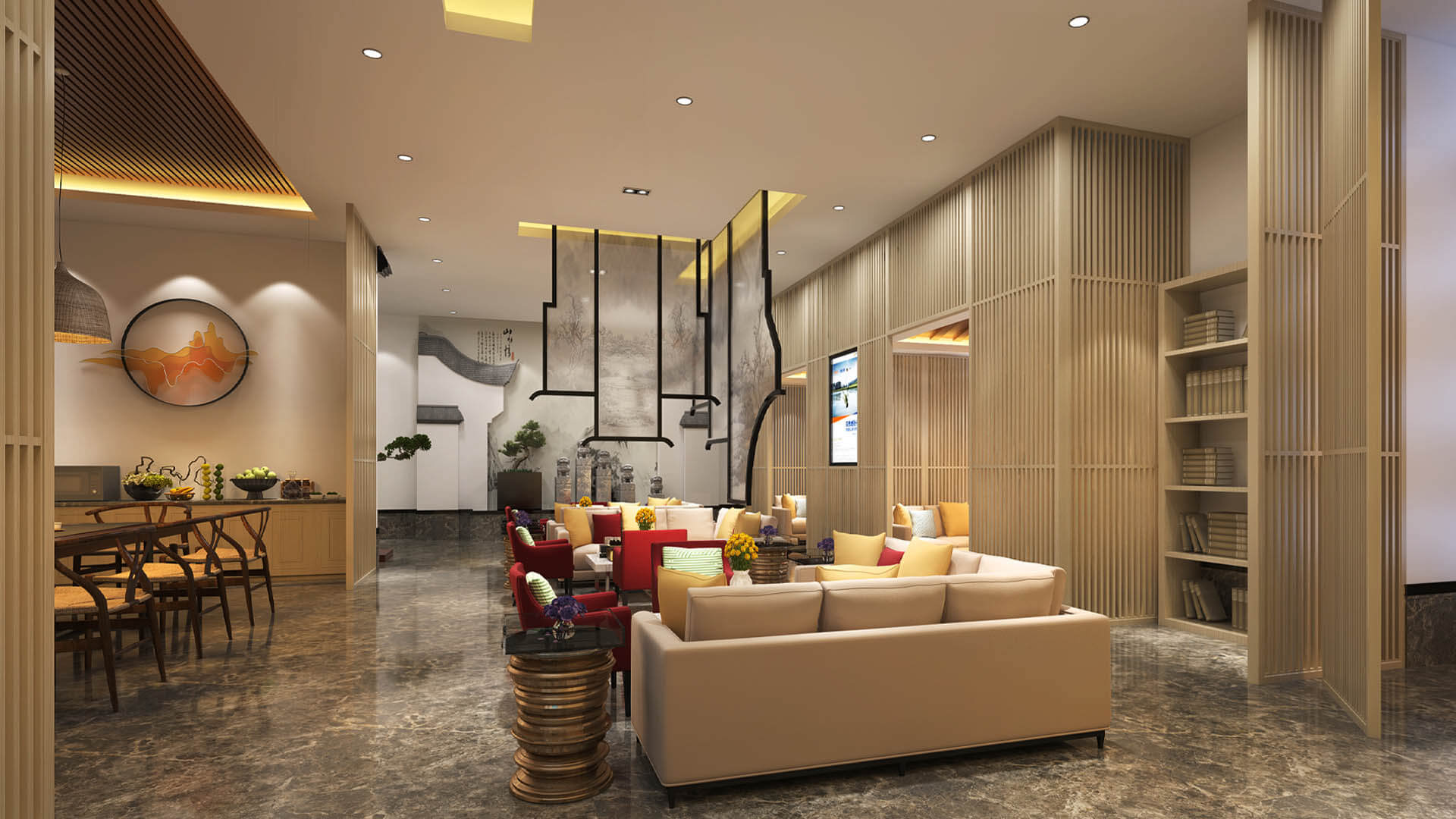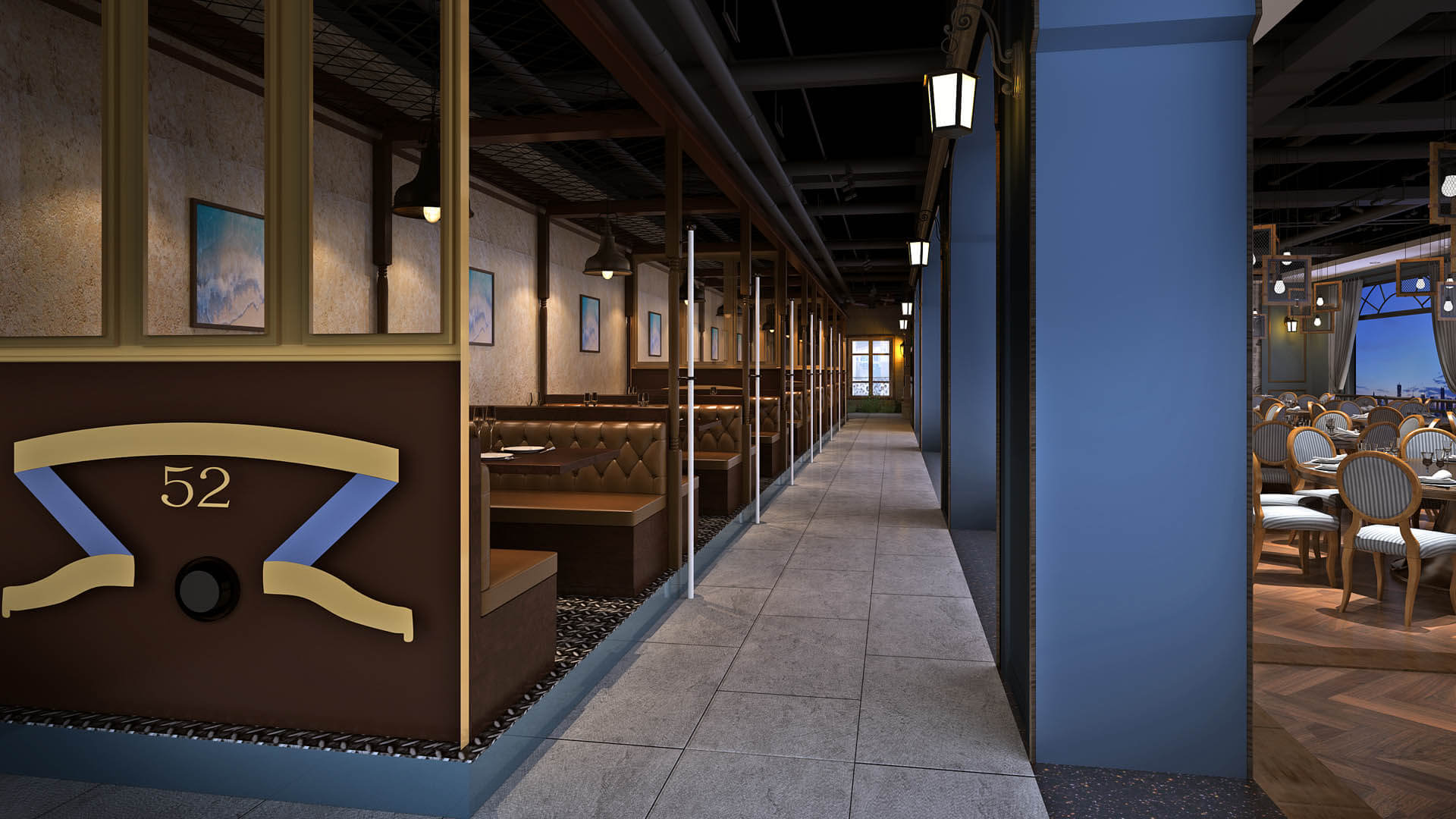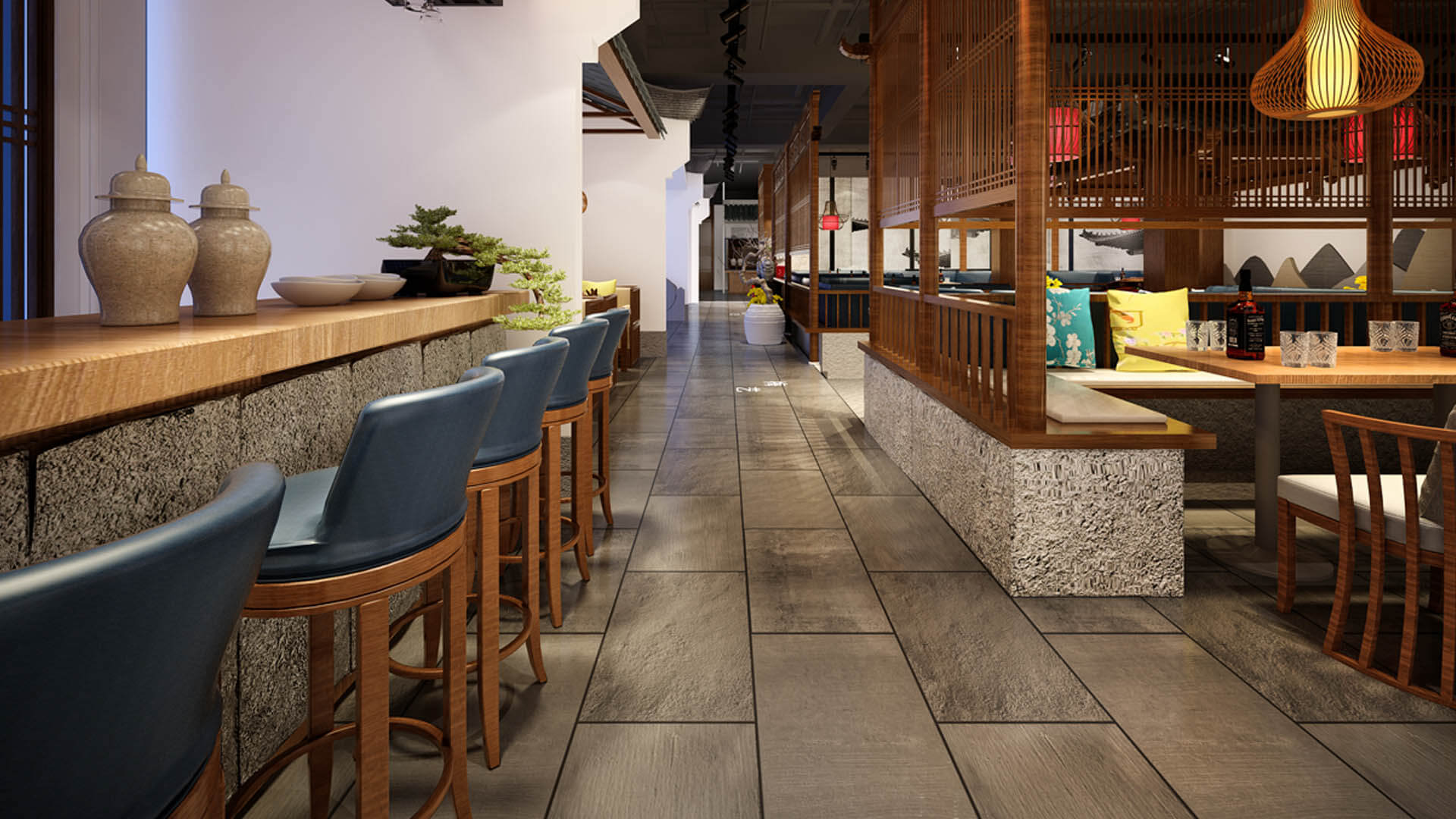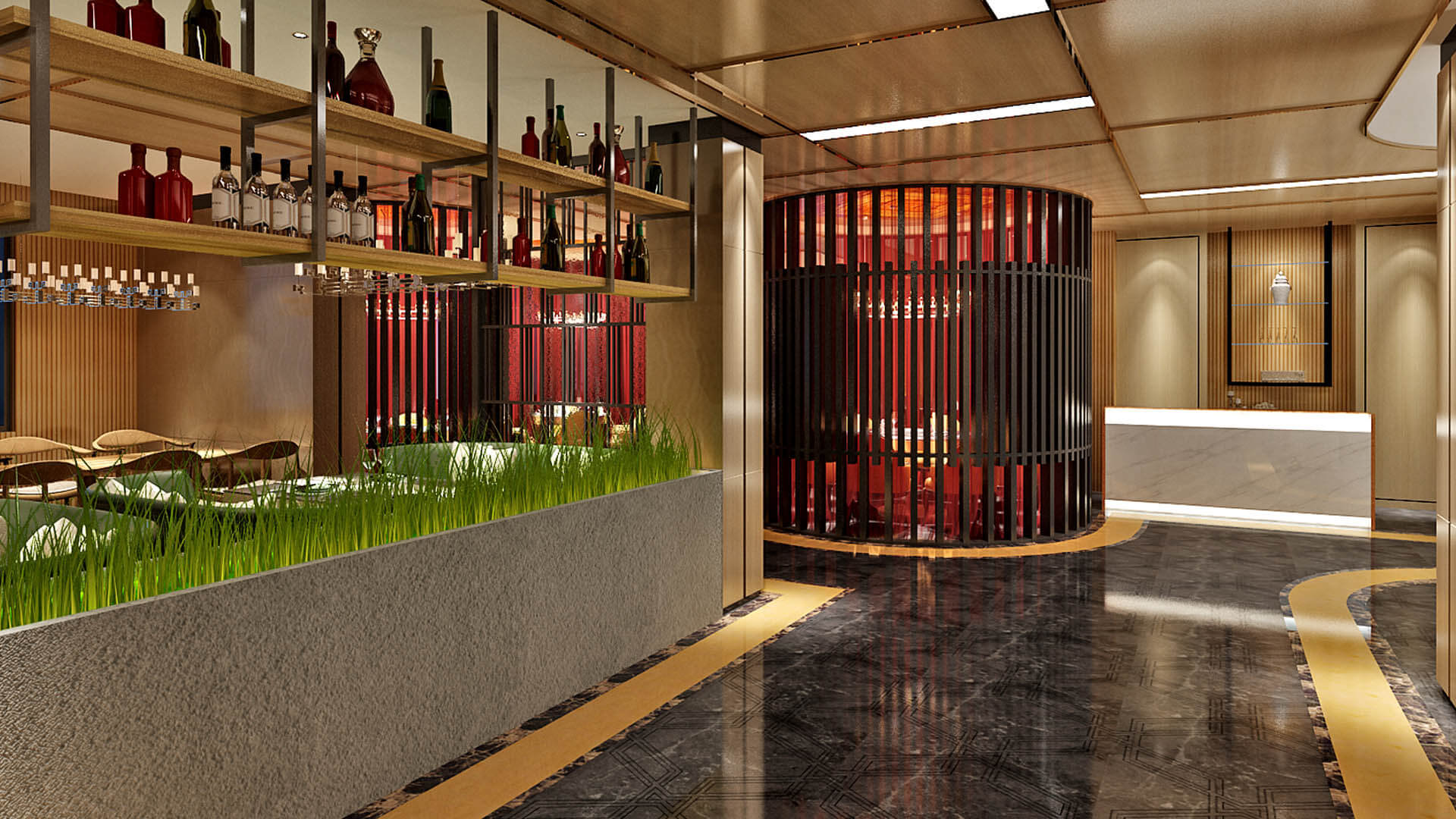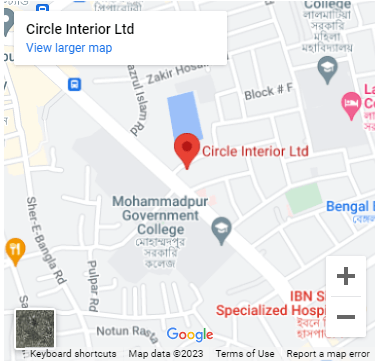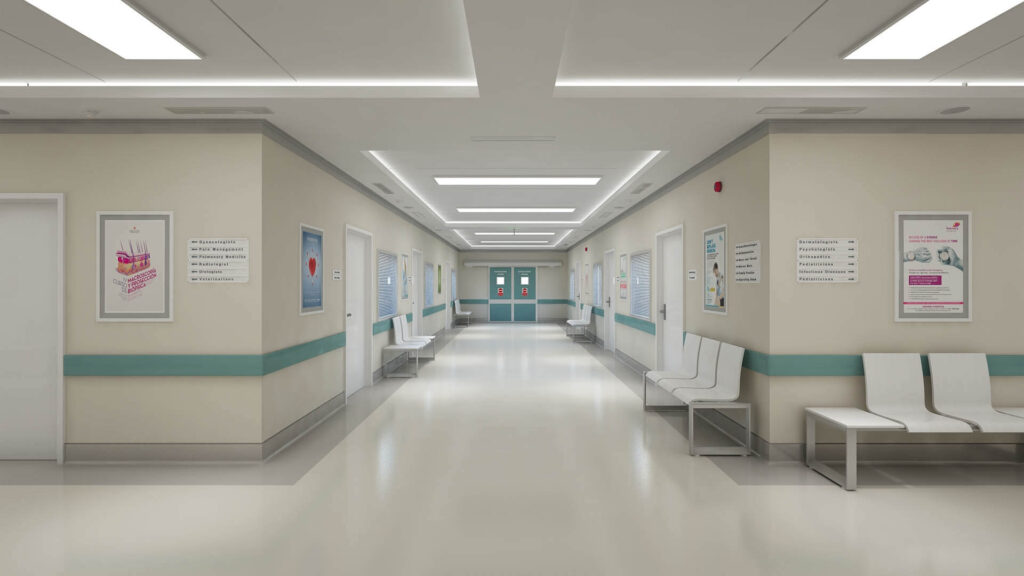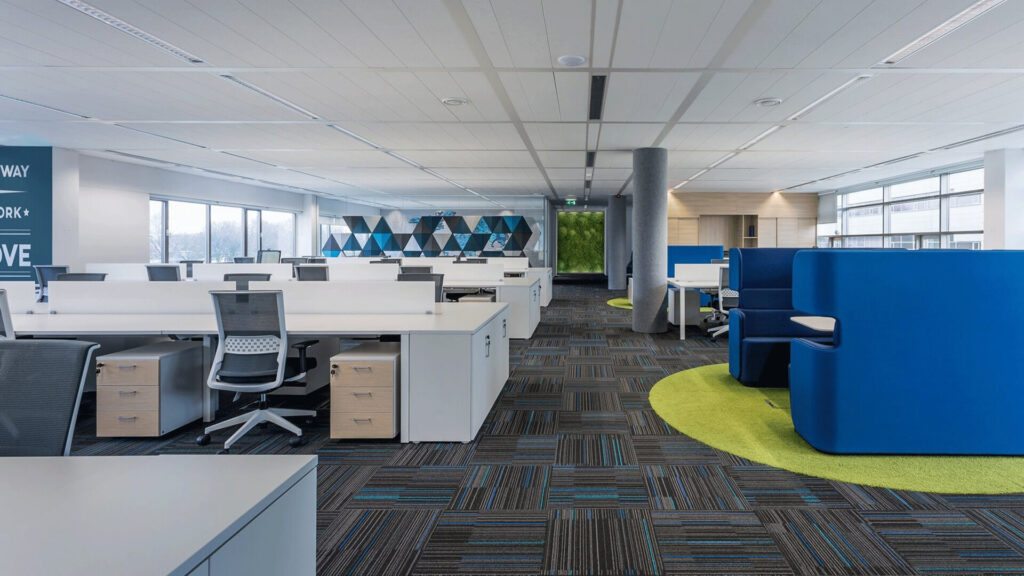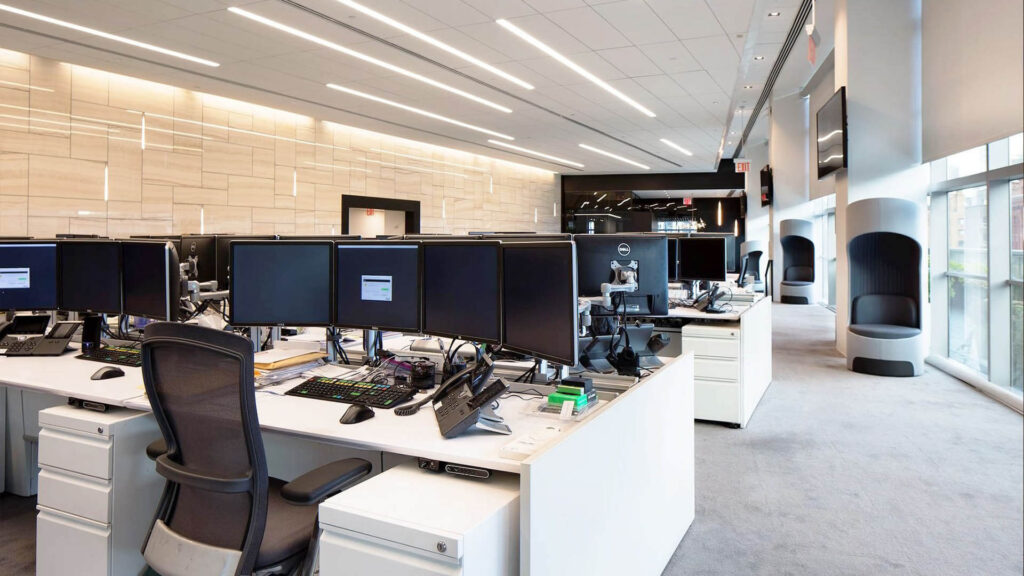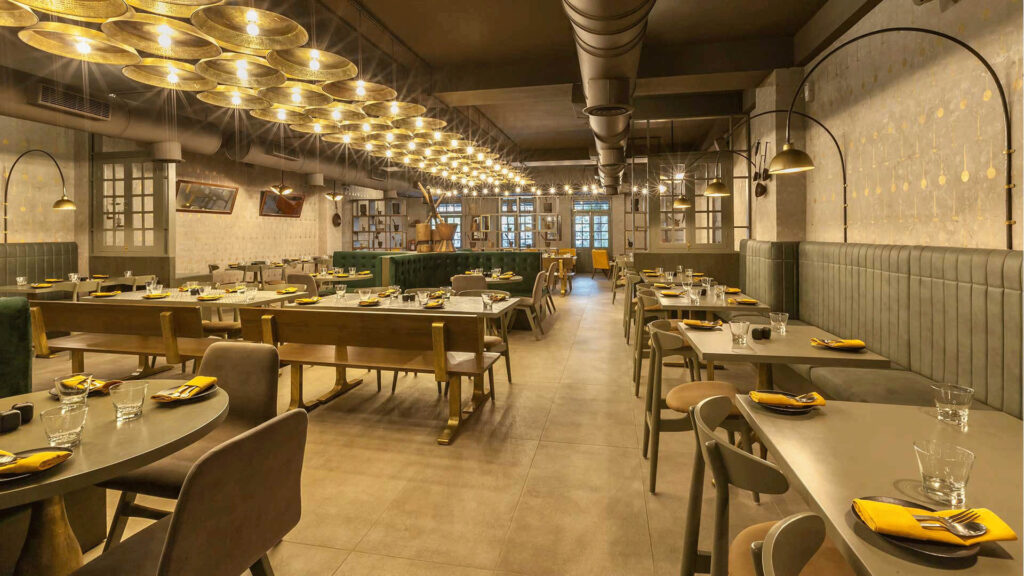Use Of Red And Gold Colors As Symbols Of Good Luck And Prosperity
In Chinese culture, people traditionally associate luck and prosperity with the colors red and gold. Therefore, it is common to use these colors in Chinese Restaurant Wall Interior Designs. In Chinese culture, people consider red as an auspicious color that symbolizes good luck and happiness. People often use red in Chinese ceremonies, including New Year, weddings, and other important events. In Chinese restaurant design, red is common in decorative elements such as tablecloths, curtains, and wall art.
Chinese people often associate the color golden with prosperity. People believe that the golden color represents wealth and luck, and they commonly use it in jewelry and other decorative items. In the interior design of residential Chinese restaurants, designers often use gold as tableware, decorations, and light fixtures. In Chinese restaurant designs, one can often see golden dragon motifs on walls or ceilings, as dragons are considered symbols of power and good luck.
Traditional Chinese Decoration
Traditional Chinese Restaurant Interior Design usually incorporates elements that reflect the country’s rich cultural heritage. This includes the use of materials such as wood, bamboo, and stone, as well as decorative elements such as calligraphy, porcelain, and silk cloth.
In terms of furniture, Chinese Traditional Restaurant Interior Design may have dark-colored lacquered wooden tables and chairs, often intricately designed or inlaid with mother-of-pearl. Decorative curtains, known as “pingfeng”, are commonly used to divide space and create privacy.
Besides, South Chinese Restaurant Design helps in maintaining an elegant and luxurious atmosphere.
Lighting is an important aspect of traditional Chinese restaurant design. Soft, warm lighting is often used to create a comfortable and welcoming atmosphere. For example, lanterns or other decorative light fixtures are used to create a visually appealing environment. In this case, you can trust Circle Interior Ltd, one of the best Architecture agencies in Dhaka, Bangladesh designing Chinese-style restaurants in this city.
Use Of Wood For Decoration
Wood is a popular material for Interior Design For Chinese Restaurants due to its natural beauty and cultural significance. In traditional Chinese culture, wood is considered one of the five essential elements, along with earth, metal, water, and fire.
There are many ways that wood can be incorporated into the architectural design of Chinese restaurants. A common use is for furniture such as tables, chairs, and benches. Another way to use wood is in decorative elements such as curtains, panels, and wall art. Wooden screens, known as “pingfeng”, are a traditional feature of Chinese architecture and are used to separate spaces and create privacy in Chinese Restaurant Interior Design.
In addition to its aesthetic appeal, wood is also valued for its symbolism in Chinese culture. Different types of wood are associated with different properties. For example, teakwood represents prosperity and success, while rosewood represents delicacy and refinement.
Use Of Feng Shui Systems
Feng Shui is an ancient Chinese practice that aims to arrange furniture and decor in a way that maximizes the flow of positive energy, or “chi.”
An important element of feng shui in small Chinese restaurant design is to organize the entrance. The entrance is made easily visible and accessible, with clear directions to help guide customers inside the restaurant. The interior design of the restaurant is also neatly arranged so that customers can easily navigate and get to their tables.
Another important aspect of Feng Shui is the use of colors. Different colors have different energy properties. A careful selection of colors helps create a certain mood or atmosphere within the interior design. For example, in Chinese culture, the color green is associated with growth and new beginnings.
The placement of furniture and decorations is also important in Feng Shui. Arranging tables and chairs in a way that encourages social bonding and fosters conversation is important.
Use Of Different Symbols
Symbolism plays an important role in Chinese culture and makes space meaningful. That is why it is often included in the Chinese restaurant interior and exterior design. For example, one of the most popular symbols used in the interior design of a large Chinese restaurant is the dragon. The dragon, a symbol of strength, good fortune, and success, frequently finds depiction in Chinese art and decoration.
Another commonly used symbol is the phoenix, which symbolizes rebirth and harmony. In Chinese art, the depiction of the phoenix often accompanies dragons and also represents feminine power and grace. Restaurant design incorporates phoenix motifs into decorative elements like cushions, curtains, and wall hangings.
Other symbols used in Chinese Restaurant Interior Design include the lotus flower, which symbolizes purity. The use of symbols in restaurant design not only adds visual interest to the space but also conveys deeper meaning and cultural significance. By incorporating these symbols into the restaurant’s decor, the owners create a space that not only looks beautiful but also reflects the values and traditions of Chinese culture.
Use Of Ceramics In Tableware
For thousands of years, ceramics have held great significance in Chinese culture, and they frequently enhance the design of large Chinese restaurant spaces, adding a touch of taste and sophistication.
A common use of ceramics in Chinese Takeaway Interior Design for the latest Chinese restaurants is tableware such as plates, bowls, and tea sets. Artisans often decorate traditional Chinese ceramics with elaborate designs or motifs, showcasing their skill and artistry.
Decorative items such as vases, statues, and sculptures in Chinese Restaurant Interior Design also utilize ceramics. Chinese Restaurant Interior Design showcases these decorative items on shelves or tables throughout the restaurant, enriching the space with visual interest and texture. Chinese Restaurant Interior Design incorporates the use of ceramic tiles or panels to create decorative murals or wall art, showcasing the beauty and aesthetics of Chinese ceramics.
Maintaining Traditional Chinese Architecture
The interior design of Chinese restaurants often incorporates elements of traditional Chinese architecture, which has a rich history spanning thousands of years. In Traditional Chinese architecture, Chinese Restaurant Decor Ideas included the use of wood, stone, and other natural materials. Moreover, there is an emphasis on balance and harmony.
One of the main features of traditional Chinese architecture is the use of curved and sloping roofs, often decorated with ornate tiles or carvings. Chinese Restaurant Interior Design commonly incorporates the use of open spaces and gardens, which are another important element of Chinese architecture. Chinese Restaurant Wall Design often includes traditional decorative decorations and artwork, such as calligraphy, paintings, and sculptures. Designers incorporate these elements to create a sense of elegance and refinement. This reflects the rich architecture of China in Chinese Traditional Restaurant Interior Design.
Combination Of Technologies
The combination of modern technology and Chinese-style restaurant interior design has become increasingly popular in recent years. Restaurants are seeking to create unique and memorable dining experiences for their customers. The use of technology improves the restaurant environment and can create a more interactive. This helps to make a beautiful experience for customers and improve operational efficiency.
One way to incorporate modern technology into the Interior Design For Chinese Restaurants is through the use of digital displays and projections. These displays can feature images of Chinese landscapes, traditional artwork, or even live feeds of chefs preparing food. Another way to use technology in design is through the integration of smart systems and automation. Restaurants can incorporate digital menus that allow customers to order and pay via their mobile devices. It’s reducing the need for physical menus and servers. Interior design can easily accomplish these tasks.
Use Of Dividers
Chinese dividers, also referred to as Chinese screens or room dividers, have adorned South Chinese Restaurant Designs for centuries. In Chinese Traditional Restaurant Interior Design, designers can make decorative panels from a variety of materials. These are from wood, bamboo, paper, or silk. Designers often lavishly carve or paint these panels with Chinese motifs or scenes in Chinese Traditional Restaurant Interior Design.
In Chinese Restaurant Interior Design, dividers help create individual dining areas or separate different sections of the restaurant. For example, a large restaurant might use dividers to create smaller, more private dining spaces. It keeps an open feel to the overall space. Dividers can add privacy to larger tables or booths. Guests can enjoy their meals without being distracted by other customers. Circle Interior Limited is the top architectural firm with 13 years of experience providing this Chinese restaurant designing service in Dhaka, Bangladesh using their technology.
In conclusion, the Small Chinese Restaurant design plays an important role in enhancing the dining experience for customers. The interior design reflects the culture, tradition, and aesthetics of Chinese cuisine while creating a comfortable atmosphere. From using vibrant colors and aesthetic decor to incorporating traditional elements and modern touches. The design of a Chinese restaurant can transport customers to great satisfaction.






